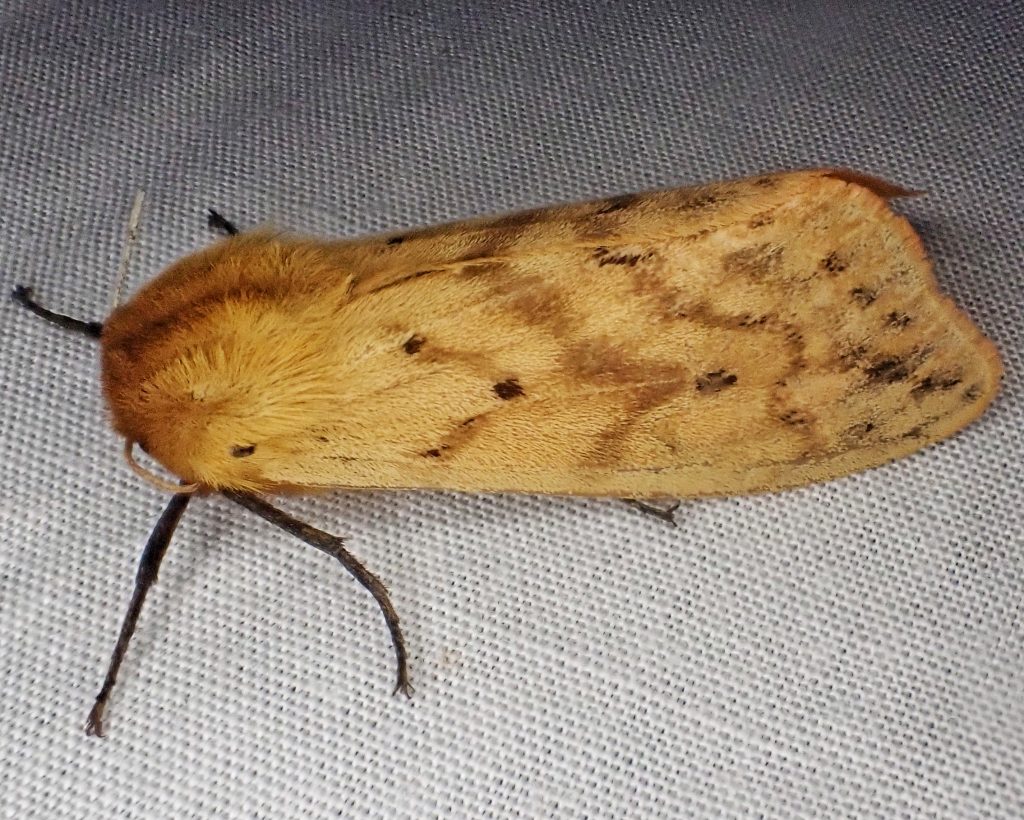
Tonight I’m somewhere I’m not supposed to be, a county park/natural area in the middle of Clark County which closes at dusk. I tried to get permission to be here, and was directed to fill out a mess of paperwork. And then I never heard a word. So I’m just gonna do it anyway, since I would expect that, since I’m not having a party, building a fire, or leaving a bunch of garbage, the worst that could happen is they tell me to leave.
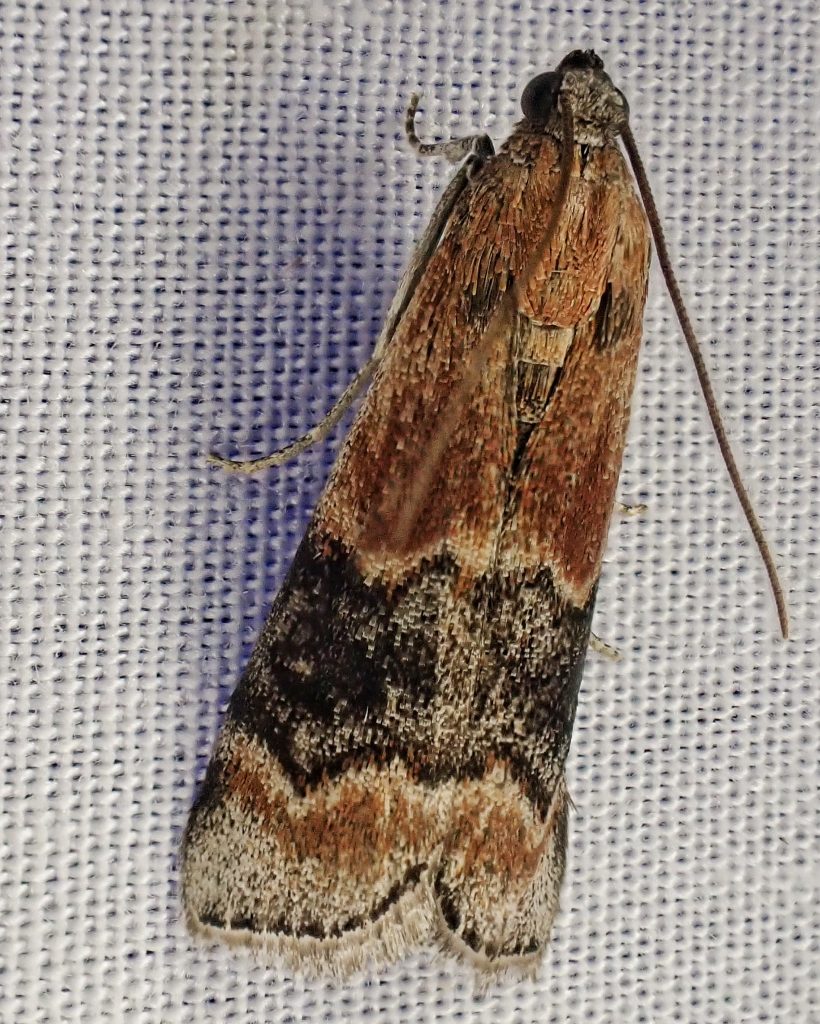
I call this place the Pristine Forest, because as soon as one gets away from the main road there is an amazing lack of non-native, invasive species of plants. No Himalayan blackberries, no ivy, no weedy Asteraceae, no scotch broom- just a forest filled with native conifers and native deciduous trees, salmonberry, thimbleberry, elderberry, osoberry, and several species of ferns. It is apparently a 2nd growth forest but it must’ve been cut a long time ago because there are Doug-fir and Western red-cedar that are over 4’ dbh. A couple creeks come together right below the plateau I’m on, and there are abundant willows and alders down there, as well as at least one Oregon ash and one cottonwood that I know of.
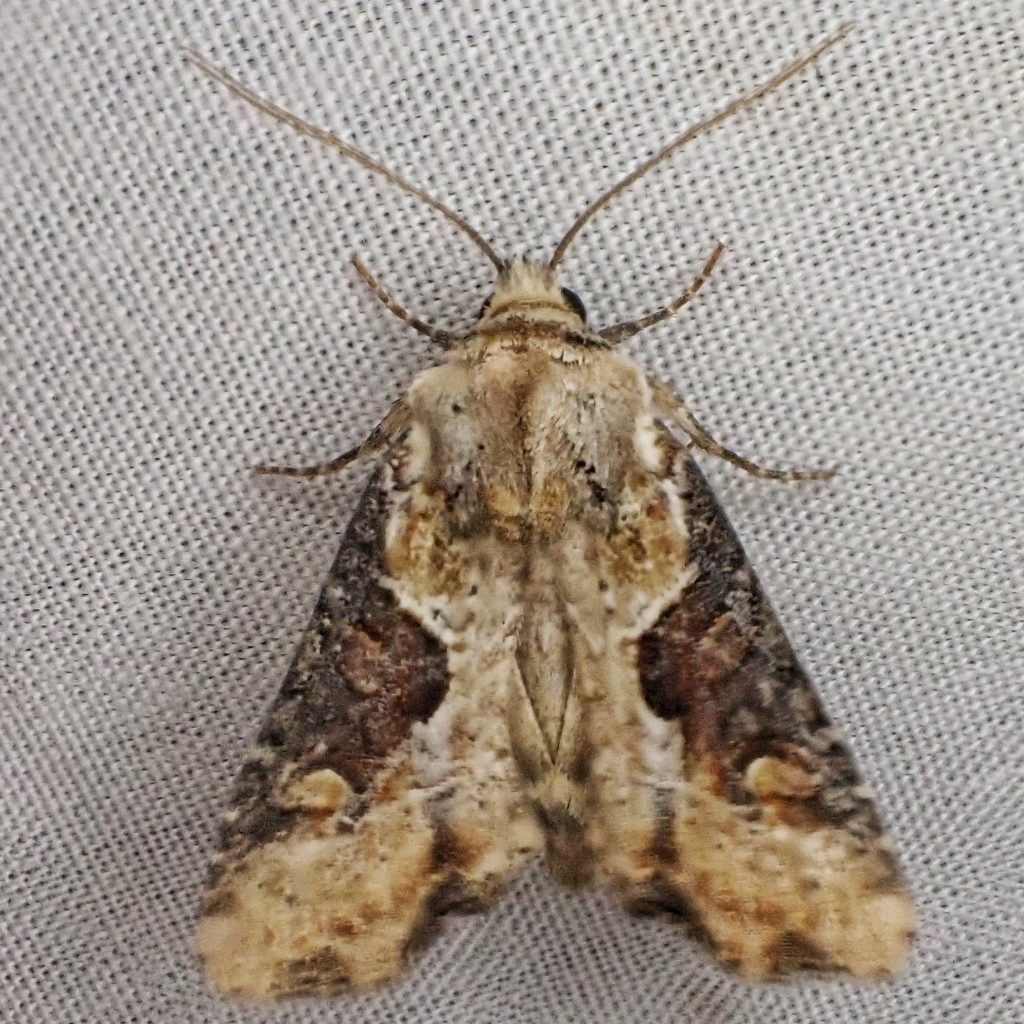
There is a meadow where I’ve often gone looking for butterflies and dragonflies, and whenever I thought about mothing here I always pictured setting up in it. But I feel like at least part of the reason last night was so successful (though it undoubtedly was mostly because it was very good, untrammeled habitat) was because I was not competing with ol’ Luna, which is fuller and rose earlier tonight, so I set up in an open part of the woods. And I had 2 moths come in while I was securing the 2nd sheet at about 9pm, which I take as a good sign, and I won’t get skunked tonight. I forgot to check the temp when I parked my van, but I hung my thermometer a few minutes ago and it now says it’s 66⁰, with a very light wind and clear skies.
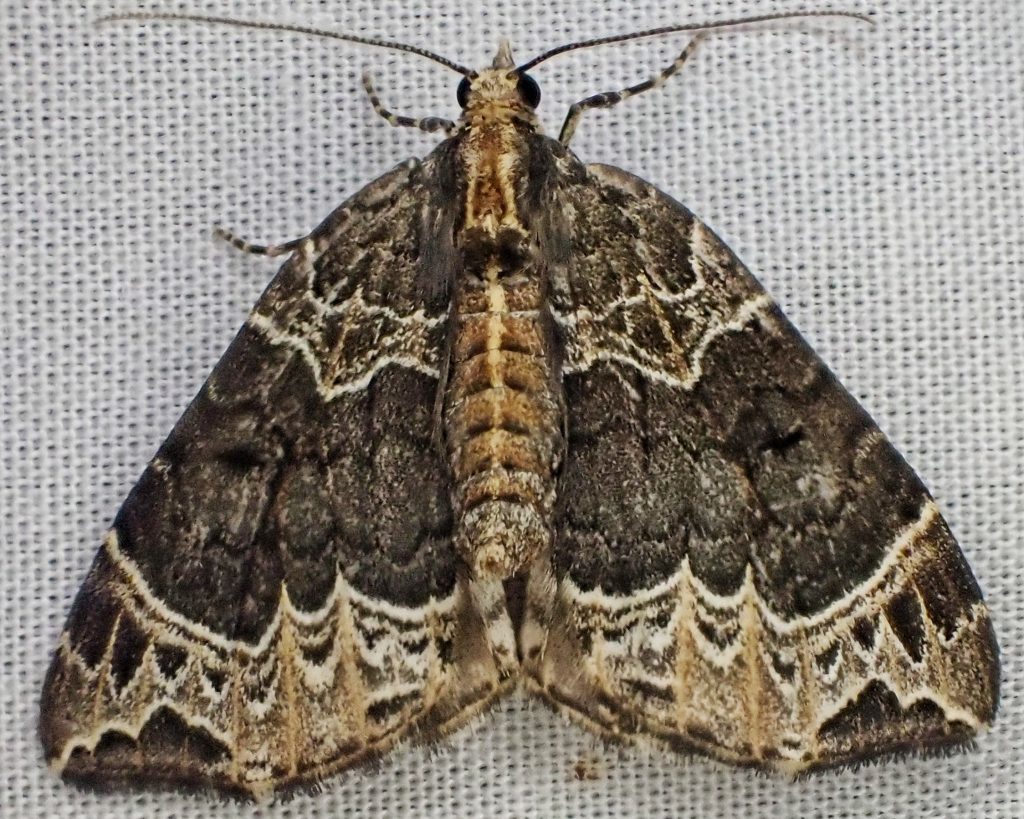
9:44- So far I’ve been visited by a Nicrophorus carrion beetle with orange marks, a half dozen Herpetogramma abdominalis, a Udea profundalis, an uncountable number of tiny dipterids, and a fair number of mosquitoes. I did not think to throw deet into the bag I carried a half mile into this spot, and I somewhat regret that.
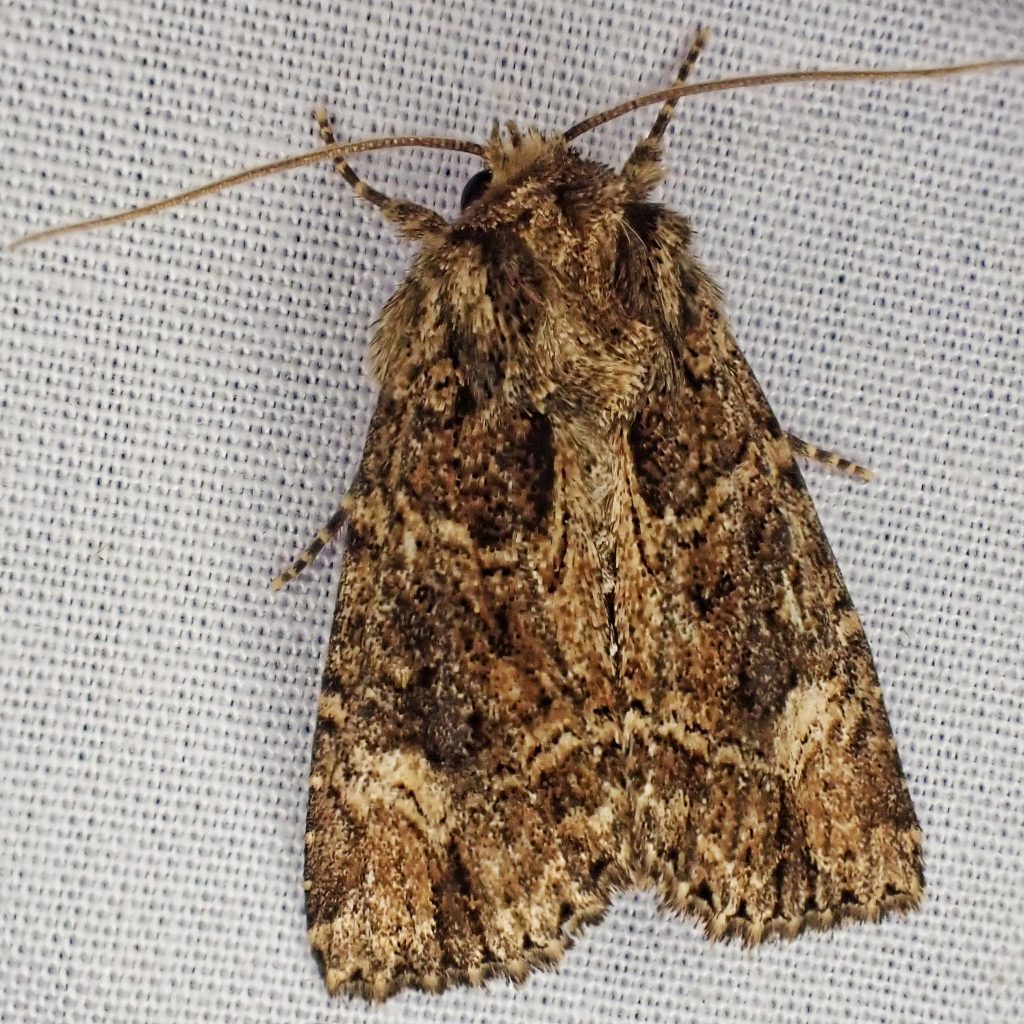
10:24- The joint is hopping now, with a few dozen moths dancing around the light and hanging out on the sidelines. It’s mostly the same species I found last night, although I can’t separate some of the Noctuids with busy patterns unless I’ve got comparison photos. That’s not at all surprising, since it’s similar habitat, and I may have to dig into the micros if I want to add to the tally tonight. There was an intriguing little crambid that I didn’t recognize at all, but it spooked and hasn’t returned. The temp has dropped to 62⁰, but it doesn’t seem to have slowed things down.
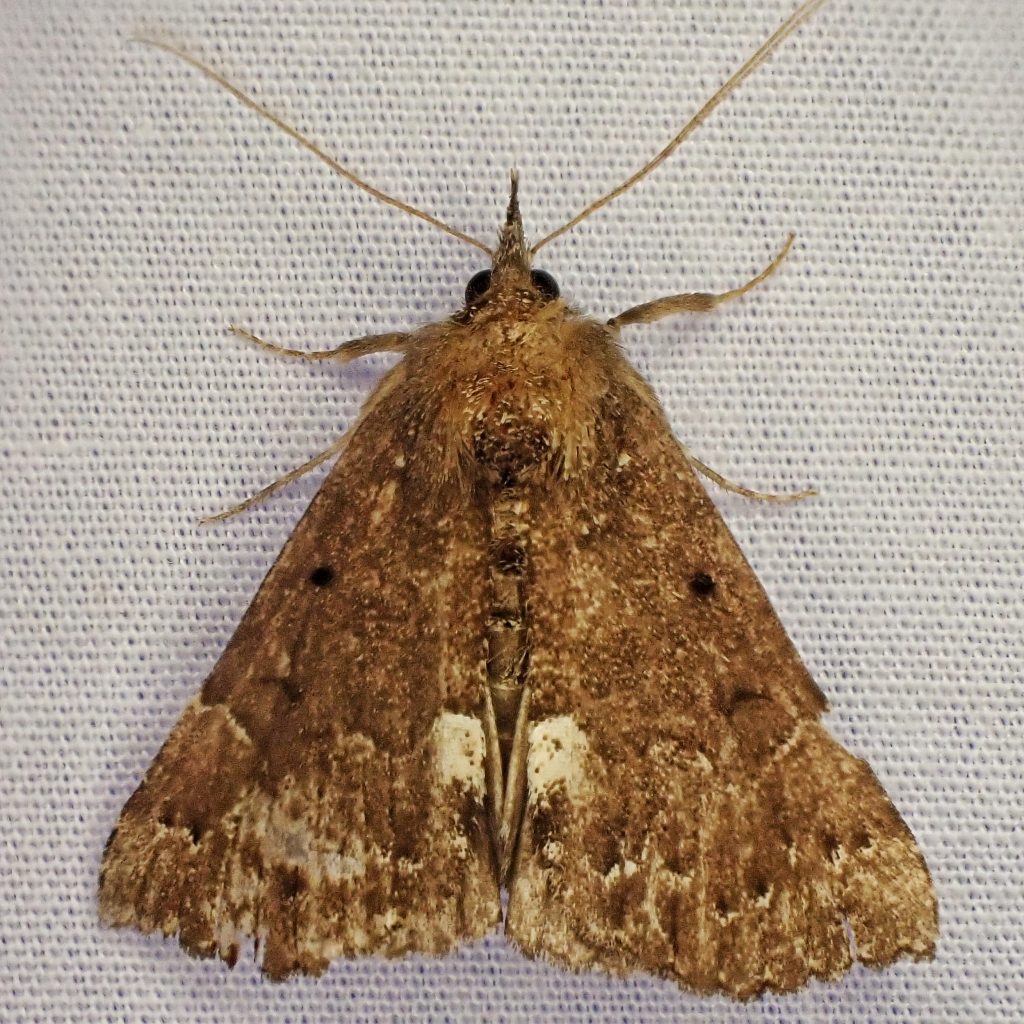
11:22- Still getting lots of action, but it’s still almost all things I saw last night, with a couple other acquaintances from earlier in the week. I did just find a Hypena bijugalis (Dimorphic Bomolocha Moth) , and there is another Hypena-ish moth that I don’t recognize. I went for a short walk to look for crawling insects on the trail, and to see how far away my light was visible. Turns out that the forest is open enough that I could see it for over a hundred yards in every direction, so I’m drawing from a good size area. The highlight of that walk came when I was watching a moth fluttering along in the glow of my headlamp, and a bat swooped in and snagged it not ten feet from my face!
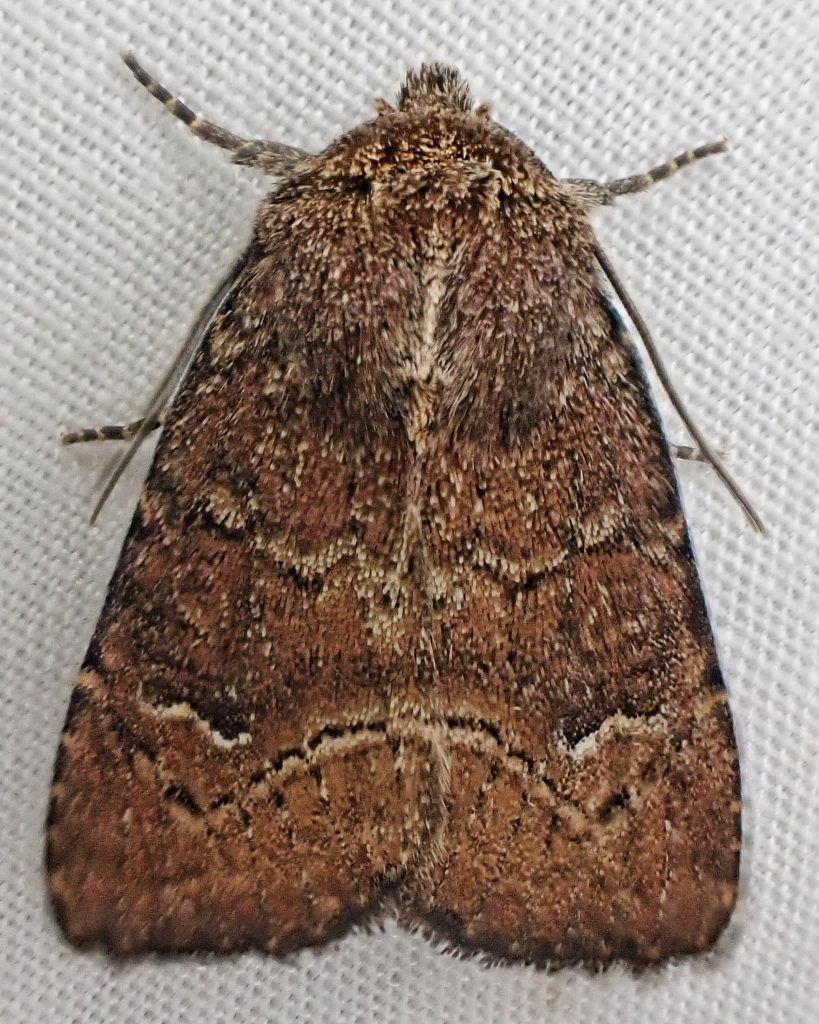
Back home-1:15- I have commitments early tomorrow (technically today), so I had been planning to shut things down about midnight anyway, but the universe gave me an assist by having my light shut down at 12:02. I really hope it’s just that my battery went dead, but that remains to be seen. Things picked up a scosh near the end, diversity wise, and I may have as many as 10 new species, but I missed getting photographs of at least three interesting but unknown species. Between tonight and what I still have to identify from last night, I might be getting close to my goal of 100 species. (Update Sunday afternoon- I am up to 102 species!)
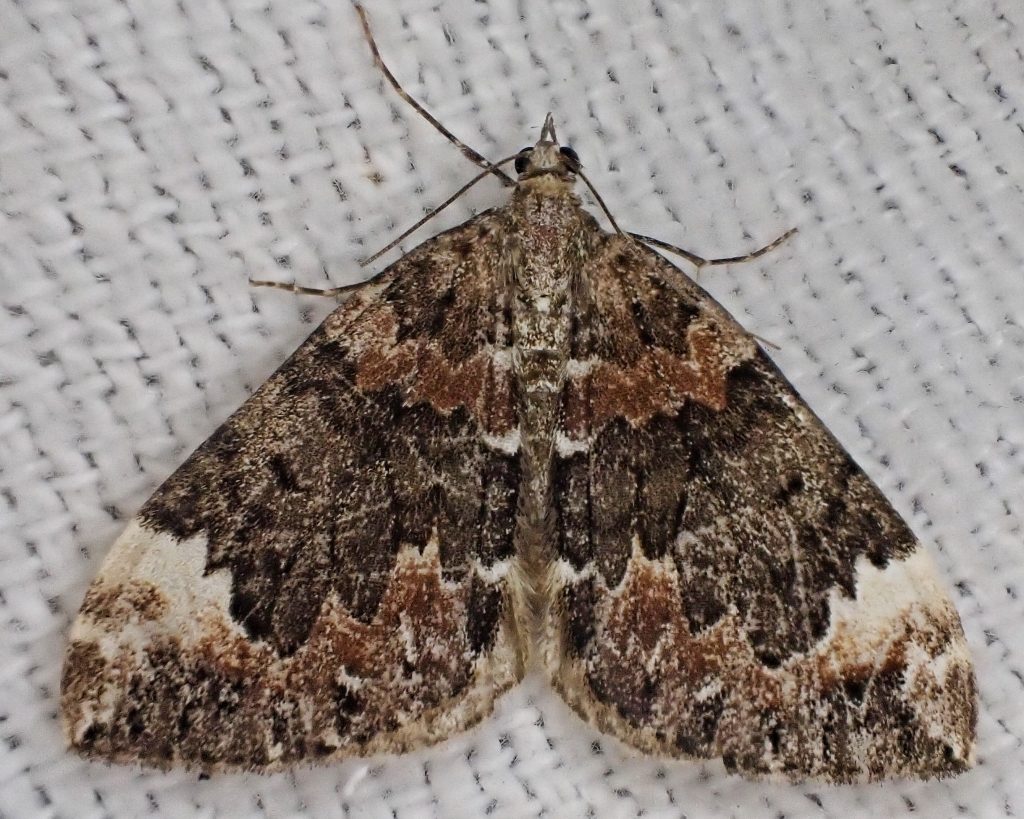
Moth tally update-
From Sunday;
Noctuidae
Mesapamea secalis ( Thank you Tomas Mustelin!)
From Friday;
Drepanidae
Drepana bilineata
Erebidae
Dasychira vagans
Spilosoma virginica
Zanclognatha jacchusalis
Geometridae
Euchlaena tigrinaria
Euphyia intermediata
Trichodezia californiata
Xanthorhoe ferrugata
Lasiocampidae
Malacosoma disstria
Noctuidae
Adelphagrotis stellaris
Pseudorthodes irrorata
From night 8, Saturday, July 29, 2023;
Geometridae
Erebidae
Hypena bijugalis (Dimorphic Bomolocha Moth)
Scoliopteryx libatrix (Herald)
Noctuidae
Anhimella perbrunnea
Aseptis binotata
Lateroligia ophiogramma
Pyralidae
Euzophera semifuneralis
Tineidae
Morophagoides burkerella
With these 21 additions I have reached my goal of 100 species in Clark County during Moth Week, and the count now stands at 102.
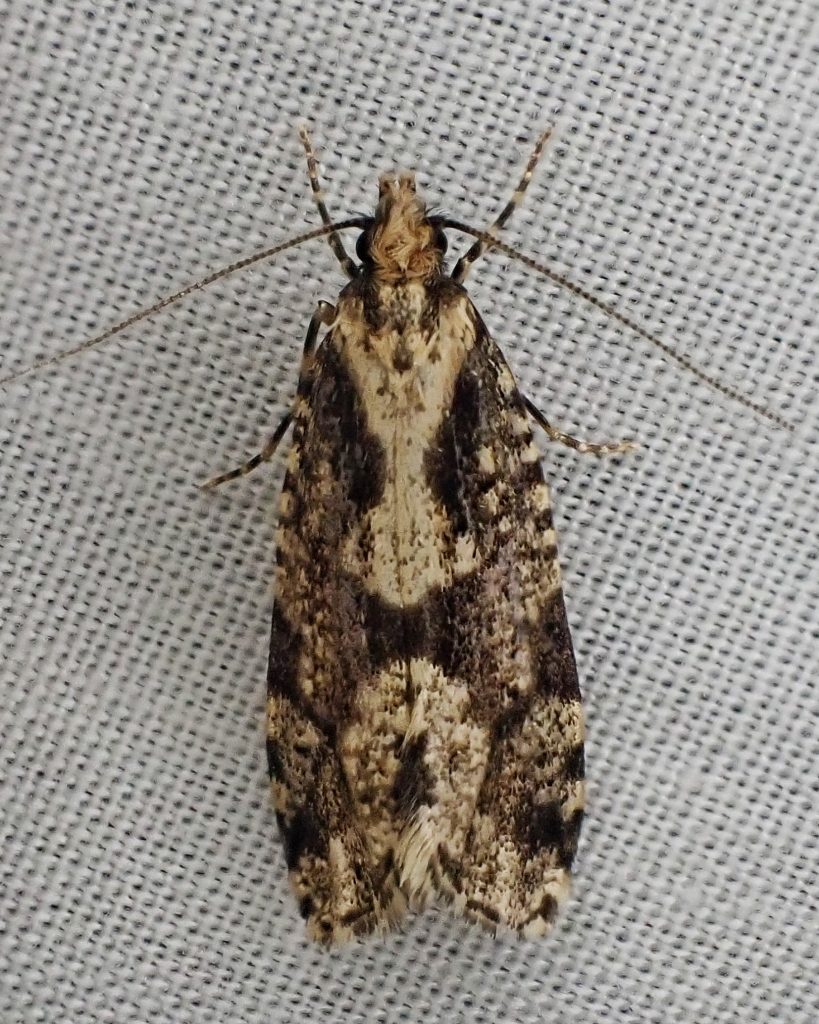
Flat out heroic and much appreciated!
Thanks for the appreciation, David, but it’s way too much fun to be considered heroic😀
wow! what fun! so many wonderful patterns!
It is, and they are, Amanda!
Nice post, Dan. Thanks!
Thanks Glenn! BTW- what kind of batteries do you use for your lights?
A very interesting week! I’ve also been out every night on my property looking for moths, and have been doing it every night since April. Getting new species is always very cool and your count of over 100 species for the week is great. You don’t list many micromoths and I wonder if they aren’t there, you aren’t photographing them, or not identifying them. They can be difficult to ID. It would be fun to discuss results, similarities and difference for the areas, so send me a direct email if you want to do that.
Bob Pearson
Packwood, WA
Thanks Bob! The micros are hard, so unless there is nothing else going I don’t photograph too many. I had an interest in Eudonia/Scoparia, but I got frustrated. If I ever get bored with macros I’ll turn my attention to micros😀
Most of the moths I haven’t identified yet are micromoths! Some of the macro genera are pretty tough too. I’m up to 472 species for the year in just my backyard now, so I should get well above 500 with August and September to come, amybe even 600. It’s been interesting to see some of the moths you found that I don’t appear to have in my area.
Wow! Those are big numbers, Robert! You must have a great backyard!
Yes they are. I pretty much ignore Eupithecia and Macaria too! The biggest reason I ignore the trickier ones is simple laziness, but I do justify that because most of my readers won’t or can’t make those distinctions either.
As I said, you must have a great backyard, but your diligence and effort should be applauded, Bob! My hat is off to you, sir!
This brings back memories. Back in the late 80s my partner at the time did a summer-long, black-light survey of the moths that came to worship, so to speak, at the temple of our upstairs veranda. I still remember her pinning hundreds of hapless moths, which she sent away to DAO in Ottawa for identification. I think her total for the season was about 260 species, though it may have been more.
I tell you this only because your Moth Week posts have been so inspirational. Who can say; perhaps I’ll even get up the gumption to attempt a second summer moth survey 35 years later!
Glad to hear you’re finding these inspiring, Trevor! Even just using a UV light for a porch light would give you interesting results with no gumption required, although I can see where a man of your curiosity and scientific bent would have a hard time not turning it into a study.
Fascinating. Please keep it up. I hope you are enjoying it.
It has been a ton’o’fun, Michael! Thanks for your kind words!